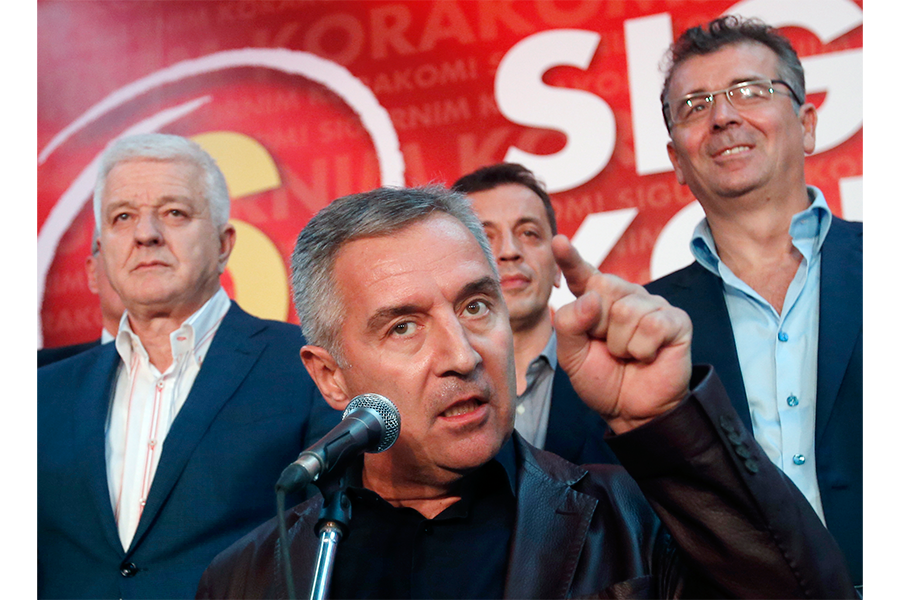Were Russian nationalists behind a coup attempt in Montenegro?
Russian nationalists were involved in a plot to assassinate Montenegro’s prime minister and install a pro-Russian coalition, according to comments made Sunday by the country’s chief prosecutor.
While there is no evidence to suggest involvement of the Russian state, Moscow has been open in its support of opposition parties in the country, alongside its dismay over the current government policy of pursuing closer ties with the West – not least membership of NATO, which could happen as soon as spring.
The accusations in Montenegro emerge at a time of heightened tension between Russia and the West, with news emerging that hundreds of thousands of NATO troops are being placed on higher alert. Yet the organization’s secretary general has said that reports suggesting a new cold war between the two entities exaggerate the situation.
"We don't have any evidence that the state of Russia is involved in any sense," Milivoje Katnić, Montenegro’s chief prosecutor, said Sunday of the alleged coup attempt, "but we have evidence that two nationalists from Russia were organizers."
The coup was slated to begin on election night, Oct. 16, with 500 people set to enter Montenegro, cause violence, break into the Parliament, and hire sharpshooters to kill Prime Minister Milo Đukanović. The plot was apparently thwarted, however, when some 20 Serbian and Montenegrin citizens were arrested that day, some of whom previously fought with pro-Russian rebels in eastern Ukraine. Fourteen remain in custody.
Serbian authorities reportedly assisted in averting the plotters’ plans, deporting a number of Russians who were monitoring Mr. Đukanović's movements from within Serbia.
"The plan was to stop Montenegro on its Euro-Atlantic path, especially to prevent it from entering NATO," Mr. Katnić said.
Before 2006, Serbia and Montenegro were a single state, and while Montenegro has since been pursuing pro-Western policies, Serbia has struggled to find a balance between geopolitical pulls, officially seeking membership of the European Union but retaining ties with Moscow.
Armed drills have been taking place over the past few days in both countries. The ones in Serbia, dubbed “The Slavic Brotherhood 2016,” involved troops from Russia, Belarus, and Serbia, while those in Montenegro have been NATO-led, also incorporating a few Serbian soldiers.
Even Montenegro, however, is split over which direction to take, with some wanting stronger ties with traditional allies in Serbia and Russia, and others looking westward.
The secretary general of NATO, Jens Stoltenberg, recently indicated to The Times (London) that hundreds of thousands of member states’ soldiers would be prepared for quicker deployment.
"We have seen Russia being much more active in many different ways," said Mr. Stoltenberg. "We have seen a more assertive Russia implementing a substantial military build-up over many years.... We are responding with the biggest reinforcement of our collective defence since the end of the Cold War."
Yet Stoltenberg rejects the idea that we are entering a new cold war between Russia and the West, according to Deutsche Welle, warning against “exaggerating and talking up tensions.”
As for Montenegro, its efforts to join NATO continue apace, with the organization’s deputy secretary general, Rose Gottemoeller, confirming her expectation of its accession to the group next spring, once all 28 member states ratify the proposition in their parliaments.
This report includes material from the Associated Press and Reuters.







